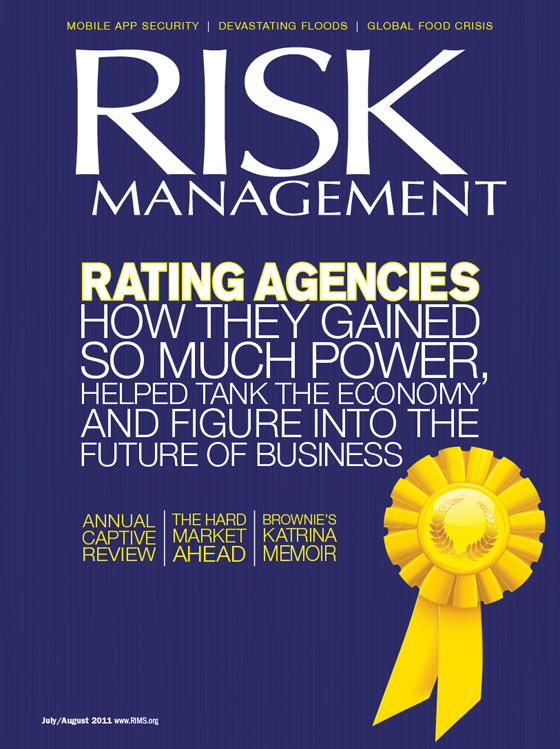Enterprise Risk Management (ERM), in one form or another, has been around for almost two decades. The number of publicly traded companies, especially those in highly regulated industry sectors, have been deploying the ERM process primarily because they were pushed (explicitly or implicitly) to do so by the major credit rating agencies, government mandates such as SEC 33-9089 or Dodd-Frank, their internal/external auditors, or members of the board of directors. No matter where the spark came from, however, the number of companies utilizing the ERM process continues to grow.
CFOs, CROs, and risk managers that have been practicing ERM for years have been incurring the expenses for doing so. As ERM programs mature it might be time to consider, in monetary terms, the value the company and its insurers places on all the work that has been done over the years. CFOs ask questions about return on investment (ROI) all the time – why not about ERM? Linking enterprise risk management and the insurance underwriting process is one approach to produce a tangible result. Because the vast majority of commercial insurance renewals are Jan. 1, CROs and risk managers should consider initiating a discussion with some of their insurers to determine the potential credits for having a functioning ERM program.
underwriting process is one approach to produce a tangible result. Because the vast majority of commercial insurance renewals are Jan. 1, CROs and risk managers should consider initiating a discussion with some of their insurers to determine the potential credits for having a functioning ERM program.
Brokers typically represent the vast majority of larger middle-market and Fortune 1000 publicly traded accounts. Brokers start to work with their larger accounts months before renewal dates and assemble a submission package for insurance underwriters. The inclusion of a timely and relevant ERM report to the underwriting submission that demonstrates the changes to the risk profile of the company should make a stronger case for favorable rate considerations for their clients. The general headings that we recommend for discussion within the underwriting submission include:
• Risk organization and governance
• Risk appetite, tolerance and limits
• Risk metrics and measurement
• Risk management process, procedures and controls
• Risk monitoring, reporting and communication
These are the same general areas that insurers themselves are being asked to discuss with their own regulators as part of the new Own Risk and Solvency Assessment (ORSA) soon to be issued by the National Association of Insurance Commissioners. If the broker or insurer does not think that having a functioning ERM program does not merit a price reduction – especially for directors & officers liability insurance – investigate further and dig deeper. Early in the renewal process is a good time for the risk manager, CRO, or CFO to meet directly with underwriters to discuss their ERM from two different perspectives: the amount of rate reduction, or the steps that could be taken to improve the risk profile enough to warrant a premium reduction.
Executive management of a company that adopted and implemented an ERM program five years ago should be considering the return on the investment that the company has made over the years. It will be up to the CFO and risk manager to demonstrate how the ERM process has been used to either change or improve the company’s risk profile from what it had been. We suggest a close working collaboration between the company and their insurance broker to craft an underwriting submission that details the benefits of the ERM program.
The collaboration would also be enhanced by including a company representative such as the CFO on the team, to represent the company in front of underwriters that may be encountering this negotiating tactic for the first time. Since the majority of corporate insurance renewals take place on Jan. 1, initiating a conversation in the summer with the insurance broker(s) involved would not be a bad idea. One caveat however, ERM in one company is not ERM in another. Completing a risk identification and assessment does not an ERM program make.


